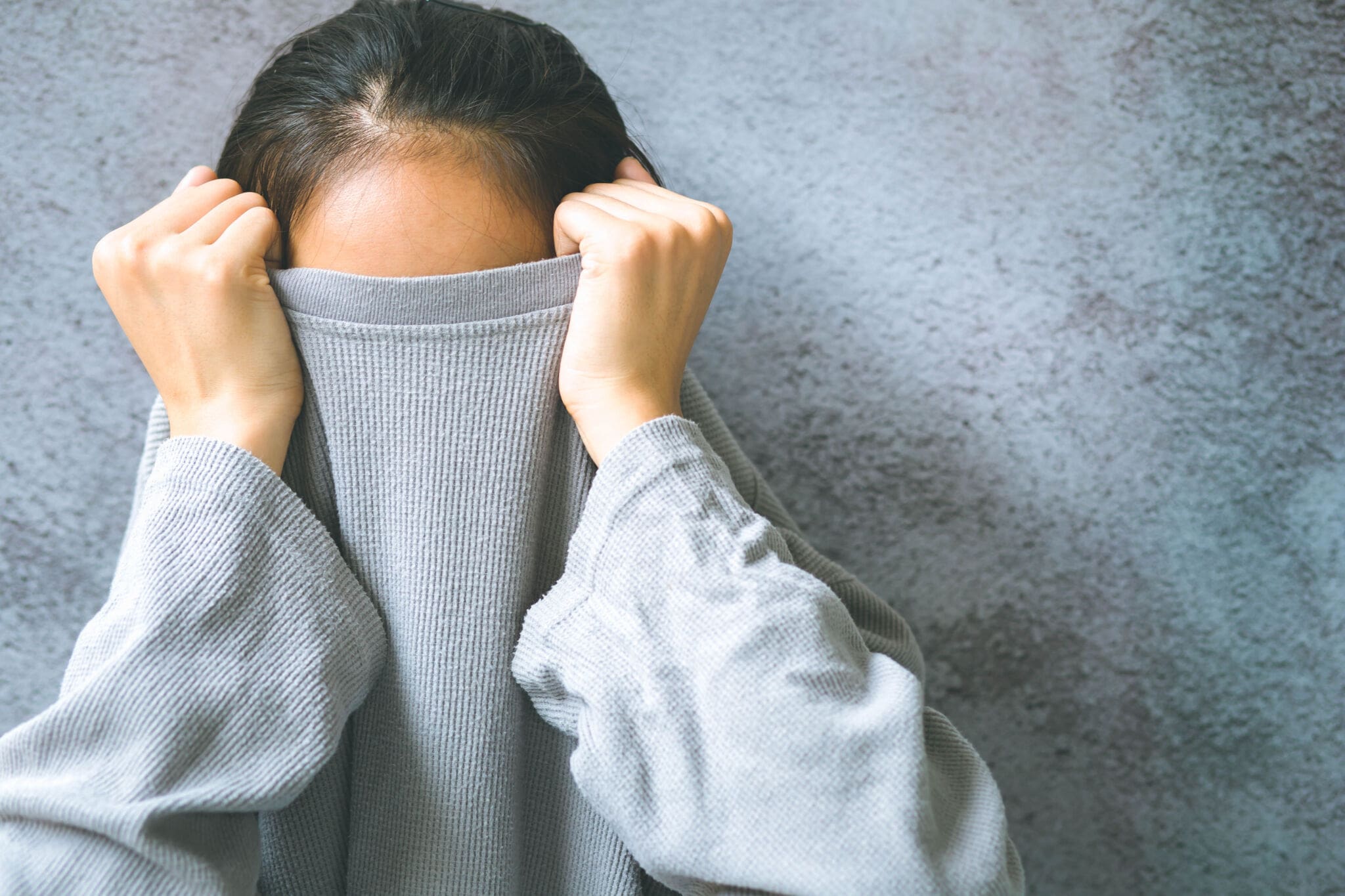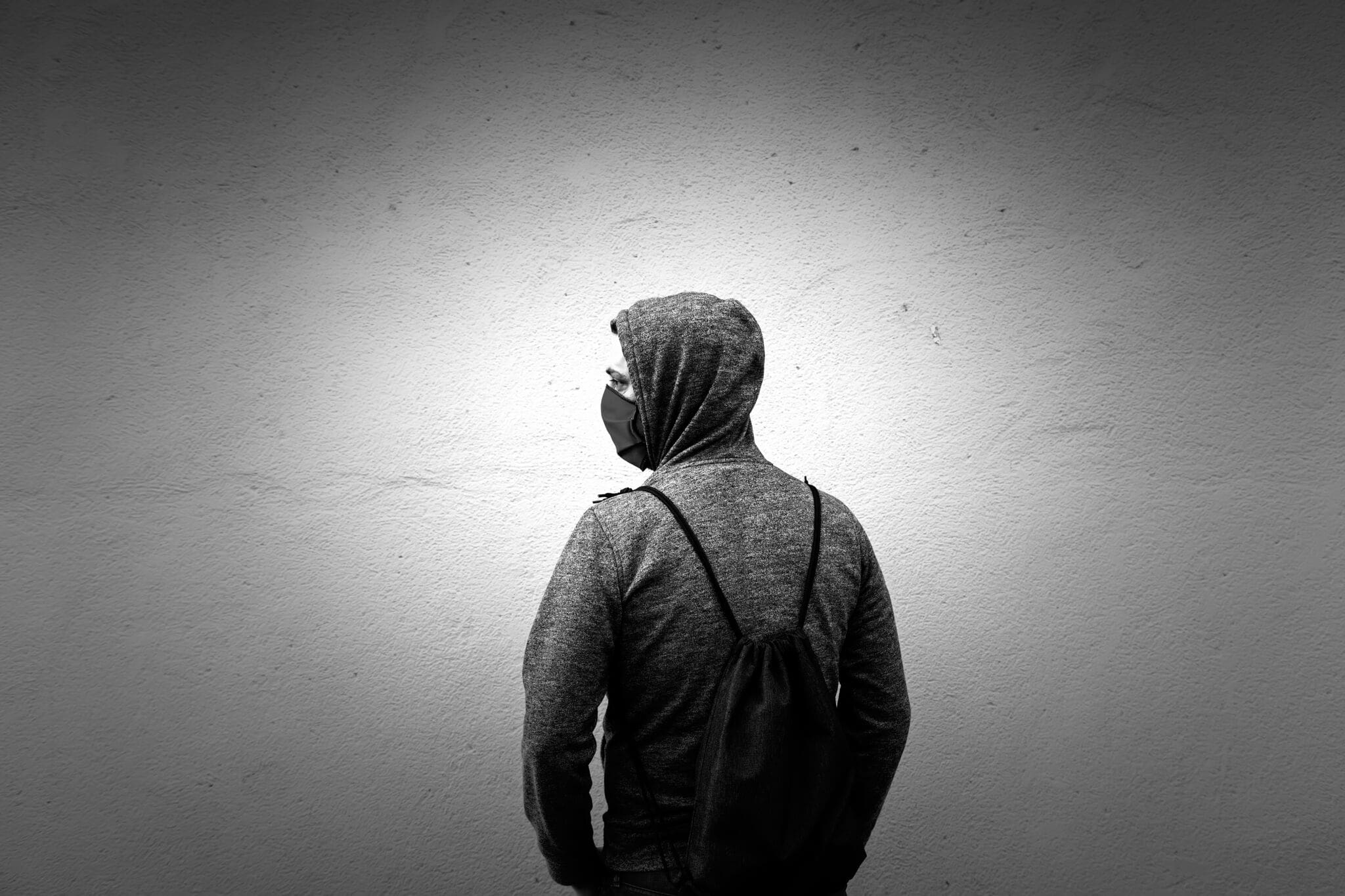In this article
Scolionophobia is an extreme fear of school. It is sometimes referred to as school refusal as the feelings of the child are so extreme that they simply cannot attend school. It is not known how many children in the UK suffer from scolionophobia. However, in the USA, the Anxiety and Depression Society believe that anxiety-based school refusal affects 2-5% of all school-aged children.
Organisations such as Mind in the UK are calling for the Government to recognise scolionophobia as a mental health problem rather than truancy, where parents are often fined for their child’s lack of attendance at school. Rather than it being called truancy or school refusal, they believe it should be renamed as emotionally based school avoidance.
What is scolionophobia?
Scolionophobia is not your average child’s reluctance to go to school. Most children at some point in their educational years will be reluctant to go to school. Maybe they’re not feeling great. Maybe they’ve had a falling out with a friend. Or maybe they just fancy staying home for the day. This type of reluctance is typical for many children through the years. This is not scolionophobia.
Scolionophobia brings with it an intensity that stays with the child for an extended period. Their fear of school, and their reluctance to attend, is genuine and extreme.
At this point in time, scolionophobia is not a recognised clinical diagnosis in the Diagnostic and Statistical Manual of Mental Disorders (SMS-5). However, there are other diagnosable disorders and conditions that may encompass scolionophobia as a part of the condition.
Scolionophobia is a long-term condition. It is more likely to affect children when they are transitioning from one school to another, or even from one class or year group to another. Many children will experience physical symptoms at the mere thought of attending school. More research is needed to identify the psychological profile of scolionophobia and whether it is linked to a chemical imbalance in the brain.

How common is scolionophobia?
School phobia is thought to affect between 2% and 5% of all children. To put this into a class perspective, around one to two children in a typical classroom will suffer from scolionophobia.
The most common age for children to develop scolionophobia is around ages 10-11. This often coincides with transitioning to secondary school as well as the onset of puberty, particularly in girls.
Who is at risk of scolionophobia?
When children are very young, they form attachments to their main caregivers, usually their parents. Between the ages of 18 and 24 months, many toddlers will go through a period of separation anxiety.
This means that when they are separated from their caregiver (for example by going to a childcare provider such as a nursery when their parents are working), they may cry, feel anxious or even have a ‘tantrum’. This is a normal phase in development. Children are supposed to be strongly attached to their caregivers.
However, for some children, this separation anxiety is more extreme and does not improve as it usually does before they begin their schooling. This can then lead to them developing scolionophobia. Because of this connection, those who have extreme separation anxiety at a very young age are more likely to develop scolionophobia.
Likewise, caregivers who are considered ‘over-protective’ are more likely to have a child who goes on to develop the condition.
Other risk factors include:
- If the child is an only child.
- If the child is the youngest in the family.
- If the child is or has been chronically ill.
- If the child has suffered a significant loss or bereavement, particularly that of one of their parents/main caregivers.
- If the child’s parents have mental health conditions, especially anxiety.
Aside from the risk factors above, children who have the following mental health conditions, anxiety disorders or who are neurodiverse are more likely to develop scolionophobia than other children:
- Autism Spectrum Disorder (ASD).
- Pathological Demand Avoidance (PDA).
- Oppositional Defiant Disorder (ODD).
- Depression.
- Generalised Anxiety Disorder (GAD).
- Obsessive-Compulsive Disorder (OCD).
- Social Anxiety Disorder.
- Post-Traumatic Stress Disorder (PTSD).
How to deal with scolionophobia
Dealing with scolionophobia is often tricky to navigate. Parents and caregivers, as well as educators, often do not fully grasp the severity or nature of scolionophobia.
As mentioned, organisations such as Mind in the UK are working hard to try and have ‘school refusal’ be renamed as ‘emotionally based school avoidance’ (EBSA) or ‘anxiety-based absence’ and have such absences recorded as a medical illness rather than as truancy or simple refusal to attend.
Children can overcome their scolionophobia with treatment. However, for some, their anxiety around attending school never fully resolves. Children may try to deal with their scolionophobia by learning some coping strategies such as breathing exercises, learning meditation or mindfulness techniques, and repeating positive affirmations.
For other children, these coping strategies may not be sufficient to deal with scolionophobia and they may need additional support and further treatment.
What triggers scolionophobia?
Aside from an extreme fear and an intense reaction to attending school, children who suffer from scolionophobia may experience intense symptoms at the mere mention of the word school. This includes seeing ‘back to school’ adverts on the TV or on posters, seeing uniform in shops and supermarkets, seeing their friends walk past their home in their school uniform or passing a school in a car or bus.
For some children, it may not be the sight of something that triggers them. It can be simply hearing someone discuss school or even starting to think about it in their own head.
Such triggers can cause intense symptoms, including a full-blown panic or anxiety attack. The severity of the response to triggers is very much an individual experience. Some people may not be visually distressed on seeing such triggers but may have a strong internal emotional response.

What are the symptoms of scolionophobia?
The symptoms of scolionophobia are largely symptoms associated with anxiety. They may experience feelings of terror and dread when triggered.
For many children, this manifests itself in the following psychological or social symptoms:
- Not wanting to go to school.
- Not sleeping well, particularly on a school night.
- Not doing their schoolwork/homework.
- Grades at school dropping.
- Being more emotionally volatile such as having outbursts of anger, acting out of character, or crying a lot.
- Seeming more withdrawn and lower.
- Isolating themselves in their bedrooms.
- Tantrums or meltdowns.
- Separation anxiety – Not wanting to separate from caregivers beyond the typical ages.
- A fear of the dark.
- Nightmares.
- A pre-occupation with safety or the safety of their loved ones.
- Feelings of worthlessness, shame or self-loathing at their inability to attend school like their peers.
Some of the symptoms may be physical:
- Panicking feelings such as a rapid heart rate, rapid breathing and sweating at the mention of school or when triggered.
- Muscle tension and shakiness.
- Diarrhoea.
Many sufferers of scolionophobia recognise that their phobia is irrational, but they are unable to control their symptoms or their reaction to their triggers.
What causes scolionophobia?
There is no specific cause of scolionophobia. It’s thought that scolionophobia has both genetic and environmental causes. The chance of developing scolionophobia is increased in families where there is a predisposition to mental illness, as discussed in the risk factors.
This predisposition may manifest itself when a child suffers some kind of traumatic event relating to school. Other children who are not predisposed to mental illness are less likely to develop scolionophobia. However, any child who has experienced a school-related trauma is much more likely to develop the condition.
School-related traumas can include:
- Bullying incidents.
- Being ‘told off’ or reprimanded by a teacher.
- Experiencing a school emergency situation such as a fire, injury, or a school shooting (which is much more prevalent in the USA and extremely rare in the UK).
- Having a significant fall-out with a friend.
- Feeling humiliated by a test result.
Of course, children may also have experienced significant traumas outside of school which then leads to their scolionophobia. These traumas can include being neglected or abused in early childhood and children who have suffered a significant loss, family separation or bereavement.
In addition to traumatic events leading to the development of scolionophobia, there are other potential causes. Children who have lived or live through adversity are much more likely to develop the phobia.
This adversity includes:
- Financial instability at home.
- Food instability at home.
- Inappropriate housing.
- Poor parenting/caregiving where there is a lack of attention or support.
- Domestic violence.
- Learning difficulties such as dyscalculia or dyslexia, which make school much more challenging.
- Sensory differences and neurodiversity in a busy, sensory-overloaded school.
How is scolionophobia diagnosed?
There are no specific diagnostic criteria for scolionophobia. Having said that, it is possible to diagnose scolionophobia as a part of another condition such as an anxiety disorder. A doctor, psychologist or psychiatrist may make a diagnosis that a child has scolionophobia after you have explained their symptoms.
They may ask the following questions:
- What symptoms does the child experience?
- When do the symptoms appear?
- How long do the symptoms last?
- Does anything specific trigger the symptoms?
- How long has the child been experiencing symptoms?
- What helps the symptoms ease?
- Has the child had any traumatic experiences, particularly those relating to school?
Once your healthcare professional has assessed the situation, they may explain that the child is suffering from school-based anxiety, which is a more common description than the use of the word ‘scolionophobia.’

How is scolionophobia treated?
There are many ways that scolionophobia can be treated. Often, a combination of treatments works better than one specific treatment.
If the symptoms are mild, working with a caregiver or teacher to come up with some coping strategies and address specific issues may well be enough. However, someone with a more extreme phobia or one that is related to a mental health or neurodivergence diagnosis may need more specific input and treatments.
Talking Therapies
Talking therapies can be an extremely useful strategy in helping a child deal with scolionophobia. Young children may not be aware that their talking therapy sessions are indeed therapy. They may be play-based, especially if the child is younger, but will work on addressing the child’s fear and resilience in coming to school. They may learn some coping strategies for when their anxiety overwhelms them.
Cognitive Behavioural Therapy (CBT)
Older children may benefit from cognitive behavioural therapy. This is because they may be able to start to identify their thought patterns and their negative and irrational thoughts. It allows the child to start to understand why they think what they think.
CBT can work well for someone with scolionophobia because their symptoms are automatic when exposed to their trigger. A lack of introspection is often why someone suffers a phobia to the extent that they do. CBT helps the child take a step back and allows them to analyse their feelings much more deeply. They can then work on replacing their thoughts with more rational and/or positive ones.
Dialectal Behavioural Therapy (DBT)
DBT consists of learning and using four skills that help people work through their intense feelings and emotions. There are two skills that are based on acceptance and two that are based on making changes. It works by helping children understand how their thoughts influence their behaviour. They can then go on to manage their emotions better.
DBT is often taught in a group situation and therefore may not always be an option, particularly for young children. The courses last for around six months.
Exposure Therapy
Exposure therapy works by slowly exposing a child to their fear. In this case, school.
For example, exposure therapy for a child with scolionophobia may take the following steps:
- Talking about school.
- Looking at photos of the school.
- Sending an email or having a conversation on the phone with a teacher from school.
- Visiting the school outside of school hours and meeting a trusted member of staff.
- Trying on the school uniform.
- Visiting the school for a very short period of time during school hours.
- Integrating the child into classes or groups with their peers in an informal setting.
- Integrating the child into classes or groups with their peers in a formal lesson.
- Increasing the amount of time the child spends at school gradually over a period of days or weeks as appropriate.
It is important that this is done very carefully and under the supervision of someone with experience in emotionally based school avoidance or scolionophobia.
Medication
For some children, particularly those who are older or those who have tried other methods, mediation may be an option. Some children are prescribed antidepressants like selective serotonin reuptake inhibitors (SSRIs) such as Sertraline (Zoloft) and Fluoxetine (Prozac).
These medications treat the underlying anxiety disorder that often lies behind scolionophobia. Anti-anxiety medications such as benzodiazepines are not really used on children so are not really appropriate for scolionophobia.
Mindfulness-Based Stress Reduction (MBSR)
Mindfulness-based stress reduction (MBSR) is a programme of intense training in mindfulness which can help people who suffer from many conditions such as stress, anxiety and depression. This technique could help someone who is suffering from scolionophobia.
The child would learn skills and techniques to help them cope with their phobia. However, finding such a programme, especially one suitable for children, is not always easy.
Meditation and Yoga
Meditation is a great way of easing people’s symptoms of severe worry and anxiety. It can help someone to regulate themselves into a more peaceful and composed state. Mindfulness meditation is a specific type of meditation that is particularly beneficial. There are many apps and videos online that can help someone learn how to do it.
Yoga and meditation often go hand in hand. Some yoga poses can help someone enter a meditative state of mind if it is practised regularly. It is often thought to be a moving form of meditation. It therefore helps to relieve anxiety and the symptoms of scolionophobia.
Exercise and Healthy Living
Exercise is good for us. We know this. Children are taught this. But what we don’t often realise is that it’s good for us mentally as well as physically. Often, when we are exercising, we are not thinking about our worries and stresses. We are distracted by moving our bodies.
Additionally, feel-good chemicals (such as endorphins) are produced in the brain during exercise and this helps to regulate our emotions, helping to eliminate negative ones.
Exercise that is particularly good for scolionophobia is walking and running. Being outside in the great outdoors does wonders for the soul!
Another thing that would help to improve the symptoms associated with scolionophobia is reducing caffeine. It may well be that children do not consume much caffeine; however, many of them do not realise the caffeine content in chocolate and drinks such as cola and particularly energy drinks, which are popular with older children.
The reason this is important is that caffeine makes people feel more anxious. It causes the heart to beat faster and you’ll feel more tense. It essentially puts the body into its ‘fight or flight’ response before you even start! By reducing caffeine, you give your body a more neutral place from which to start.

Final thoughts on ‘What is Scolionophobia?’
Scolionophobia is a very real fear for many children in the UK. It’s not just a dislike of school, but an intense emotional response to school. Thankfully, there is much more awareness of scolionophobia these days (although it’s often called ‘school refusal’ or ‘emotionally based school avoidance’).
There are also organisations that can help parents whose children suffer from the phobia:

Understanding Phobias
Just £20
Study online and gain a full CPD certificate posted out to you the very next working day.
About the author

Laura Allan
Laura is a former Modern Foreign Languages teacher who now works as a writer and translator. She is also acting Chair of Governors at her children’s primary school. Outside of work, Laura enjoys running and performing in amateur productions.
Similar posts

Private: Navigating Discrimination and Harassment Claims in the Workplace

Private: The Role of Therapy, Medication and Lifestyle Changes in Managing Depression

Private: The Emotional and Psychological Impact of Dementia on Families

Private: Understanding Fetal Alcohol Spectrum Disorder, Causes and Implications
CPD Online College
Telephone: 0800 077 3063
Email: hello@cpdonline.co.uk
Meet the Team
Affiliate login




Course categories
Food Hygiene
Health and Safety
Safeguarding
Care
Business
All courses
Top courses
Food Hygiene for Catering Level 2
Health and Safety Level 2
Fire Safety Awareness
Mental Health Awareness
Autism Awareness
Safeguarding Children Level 2
All courses
Our resources
Setting up a business
Starting a new career
Food safety guides
CPD guides
Knowledge base
© CPD Online College Limitedabout:blank
Sign Up






